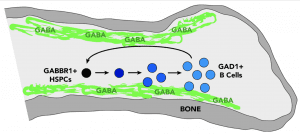
Discovery Spotlight
Owen J. Tamplin, PhD
Assistant Professor
Department of Cell & Regenerative Biology
Blood stem cells and their interaction with the microenvironment
We study the basic biology of hematopoietic stem cells (HSC) and their microenvironment. These stem cells are clinically important as a curative treatment for many blood cancers and diseases. A better understanding of HSC and their supportive niche will help us improve these treatments and thereby patient survival. We use complementary mouse and zebrafish model organisms. The zebrafish is now a well-established model for in vivo genetic and chemical screening. It is the only vertebrate genetic model that allows high-resolution live imaging of endogenous cellular behaviors. We can harness the strengths of the zebrafish model to develop and test unique hypotheses that could not be acquired using any other system. We then use the mouse model to test whether discoveries can be translated to a mammalian system. Our experimental approaches integrate genetic tools, live imaging, and chemical biology. We use highly specific transgenic fluorescent reporters of HSC to directly observe endogenous stem cells in their niche. Together with reporters of other cell types, such as endothelial and stromal cells, we can track single stem cells as they interact with their surrounding cells. The goal of this research is to understand the mechanisms of communication between HSC and the niche.
Publications:
https://www.ncbi.nlm.nih.gov/myncbi/1bAuDdzrszGAi/bibliography/public/



